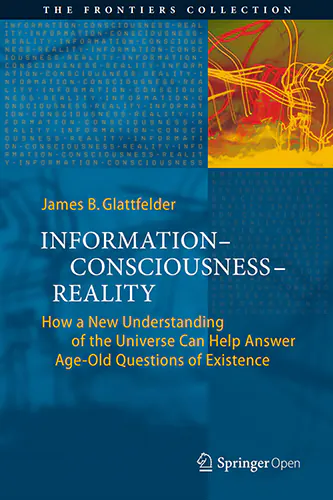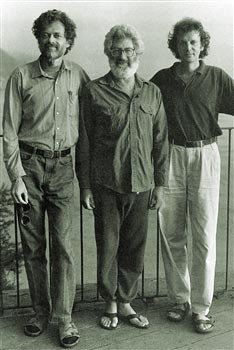The Library of Consciousness
of Consciousness
A Landscape of Consciousness
Diverse explanations or theories of consciousness are arrayed on a roughly physicalist-to-nonphysicalist landscape of essences and mechanisms. Categories: Materialism Theories (philosophical, neurobiological, electromagnetic field, computational and informational, homeostatic and affective, embodied and enactive, relational, representational, language, phylogenetic evolution); Non-Reductive Physicalism; Quantum Theories; Integrated Information Theory; Panpsychisms; Monisms; Dualisms; Idealisms; Anomalous and Altered States Theories; Challenge Theories. There are many subcategories, especially for Materialism Theories. Each explanation is self-described by its adherents, critique is minimal and only for clarification, and there is no attempt to adjudicate among theories. The implications of consciousness explanations or theories are assessed with respect to four questions: meaning/purpose/value (if any); AI consciousness; virtual immortality; and survival beyond death. A Landscape of Consciousness, I suggest, offers perspective.
Appreciating Imagination
Join Terence McKenna in this weekend workshop as he takes us on an imaginative journey into the depths of human creativity. He explores psychedelics, virtual worlds, and shamanic states of consciousness, saying how an embrace of our imagination allows us to envision and manifest alternate realities beyond cultural conditioning. By cultivating our creative faculties with mathematical reasoning, intuition, and immersion in nature, he guides us toward transcending ideological limits into an enlightened future of compassion. Ultimately, breaking boundaries through the power of imagination will inspire us to reach new heights of understanding and connectivity.
Artificial Intelligence and the Superorganism
Daniel Schmachtenberger and Nate Hagens discuss a surprisingly overlooked risk to our global systems and planetary stability: artificial intelligence. Through a systems perspective, Daniel and Nate piece together the biophysical history that has led humans to this point, heading towards (and beyond) numerous planetary boundaries, and facing geopolitical risks all with existential consequences. How does artificial intelligence not only add to these risks, but accelerate the entire dynamic of the metacrisis? What is the role of intelligence versus wisdom on our current global pathway, and can we change course? Does artificial intelligence have a role to play in creating a more stable system, or will it be the tipping point that drives our current one out of control?
Build Your Own Damn Wagon
"Do not watch, do not consume," implores Terence McKenna, inviting us on a thought-provoking journey to reclaim our humanness. By building our own conceptual wagons, rather than riding ready-made vehicles of meaning, we can travel along unique paths of critical thinking. Once within our own virtual worlds, the wonder of our distinctive minds will be open for discovery.
Countdown Into Complexity
At his weekend workshop Terence led attendees on an intellectual odyssey traversing psychedelics, virtual reality, technology, culture, spirituality, and the evolution of novelty over time. Blending philosophy, futurology, and mysticism, he explored humanity's relationship with nature and machines, challenging participants to think critically, create freely, and keep an open mind. The goal was to expand consciousness and uncover deeper truths about existence.
In the Valley of Novelty
Journeying through multiple dimensions of psychedelic consciousness, Terence McKenna's visionary weekend workshop invites us on an entheogenic voyage to the frontiers of the mind and its imminent conquering of matter. Blending scientific insights with shamanic wisdom, McKenna argues that natural plant medicines like psilocybin and DMT provide portals into mystical realms and alien dimensions, catalyzing revelations about nature, reality, and the human psyche. He urges us to courageously explore these consciousness-expanding substances, seeking the gratuitous beauty and truths they unveil. For McKenna, the psychedelic experience holds secrets to our world and ourselves—if only we dare lift the veil.

Information — Consciousness — Reality
This open access book chronicles the rise of a new scientific paradigm offering novel insights into the age-old enigmas of existence. Over 300 years ago, the human mind discovered the machine code of reality: mathematics. By utilizing abstract thought systems, humans began to decode the workings of the cosmos. From this understanding, the current scientific paradigm emerged, ultimately discovering the gift of technology. Today, however, our island of knowledge is surrounded by ever longer shores of ignorance. Science appears to have hit a dead end when confronted with the nature of reality and consciousness. In this fascinating and accessible volume, James Glattfelder explores a radical paradigm shift uncovering the ontology of reality. It is found to be information-theoretic and participatory, yielding a computational and programmable universe.

Painting the Sidewalk with Water
These lively talks and dialogues are about seeing through the illusion of separation and waking up to the boundless wholeness that is all there is. Joan's approach is open and explorative, questioning all attempts to conceptually grasp and frame the movement of life. She talks about seeing through the stories and beliefs that create our human suffering and waking up to the simplicity of what is. This book beautifully dissolves the apparent dichotomy between the uncompromising "this is it, just as it is" message of radical non-duality and the emphasis on "being here now" that is found in many meditation teachings. Joan has an affinity with Buddhism, Advaita, and radical non-duality, but she belongs to no tradition. In these talks and dialogues, she takes on such perennial questions as, Is there a way out of personal and global suffering? Can we choose to stop addictive and destructive patterns? Does being awake take effort, vigilance, and practice, or is it effortlessly and unavoidably always already the case? What happens when we die?
Permitting Smart People to Hope
McKenna traipses through a mélange of scientific and technological folderol—the detection of the top quark, swift progress on sequencing the human genome, newfangled theories about the origin of the moon, quantum bafflements like non-locality, the proliferation of the internet and information technology, speculations on the nature of time from Prigogine, and sundry other bamboozlements. He elucidates how these breakthroughs in diverse fields might converge to profoundly transform human civilization, culture, and consciousness in the imminent future.

The Book
At the root of human conflict is our fundamental misunderstanding of who we are. The illusion that we are isolated beings, unconnected to the rest of the universe, has led us to view the “outside” world with hostility, and has fueled our misuse of technology and our violent and hostile subjugation of the natural world. In The Book, philosopher Alan Watts provides us with a much-needed answer to the problem of personal identity, distilling and adapting the ancient Hindu philosophy of Vedanta to help us understand that the self is in fact the root and ground of the universe. In this mind-opening and revelatory work, Watts has crafted a primer on what it means to be human—and a manual of initiation into the central mystery of existence.

The Evolutionary Mind
What could have been the cause for the breakthrough in the evolution of human consciousness around 50,000 years ago? Part of the Trialogues at the Edge of the Unthinkable held at the University of California.
The Old and the New Vision
Herbert Günther reveals how ancient Tibetan Buddhist texts offer insights into consciousness that parallel modern scientific discoveries. The Tibetans viewed humans not as isolated beings, but as expressions of universal intelligence, describing three levels: the physical body, an experiential “phantom-like” body, and a mysterious deep structure. Their texts suggest that the universe itself is conducting a grand experiment through human consciousness—playfully creating new possibilities and evolving toward higher forms of order.
Vertigo at History's Edge
As we approach history's climax, McKenna heralds the inevitable complexification of existence. He foretells technology and pharmacology's fusion into higher consciousness and collective awakening through boundary dissolution. Still, the human spirit yearns freedom from constraints of belief, non-experience. McKenna beckons: reclaim your mind, body, and world! Destiny awaits our willful shaping. The cosmic hourglass empties; shall we awaken?